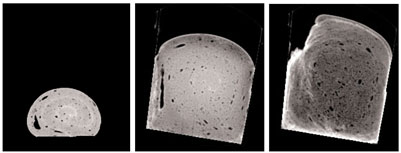Temperature and humidity effects on baking
- Like
- Digg
- Del
- Tumblr
- VKontakte
- Buffer
- Love This
- Odnoklassniki
- Meneame
- Blogger
- Amazon
- Yahoo Mail
- Gmail
- AOL
- Newsvine
- HackerNews
- Evernote
- MySpace
- Mail.ru
- Viadeo
- Line
- Comments
- Yummly
- SMS
- Viber
- Telegram
- Subscribe
- Skype
- Facebook Messenger
- Kakao
- LiveJournal
- Yammer
- Edgar
- Fintel
- Mix
- Instapaper
- Copy Link
Posted: 2 January 2014 | Gary Tucker and Graham Duckworth, Baking and Cereal Processing Department, Campden BRI | 1 comment
The production of baked goods such as bread, cake, biscuits and pastry requires a number of processing steps between which there exists significant interaction. This article considers the influence of temperature and humidity control in industrial or plant bakeries and how this can impact on product quality. The stages of mixing, forming, proving, baking and cooling are considered. Bread is most sensitive to changes in temperature and humidity and so this article discusses these effects on bread but makes reference to other baked products as required.


Figure 1: X-ray image of bread dough during proving and baking, showing dough at the start and end of proving and at the end of baking
There are numerous methods of making bread, ranging from the highly labour intensive craft techniques using sourdough cultures, sponges and brews, to the high volume industrial bread processes which are more time and cost efficient. Despite the variety of methods, most use common processing steps comprising mixing, resting, moulding, proving, baking and cooling. Each of these requires considerable skill levels on behalf of the craft baker or high levels of automation and process control for the plant baker. Both craft and plant bakers intend on producing bread with a specific structure and both take immense care in their processes to ensure that the product meets the needs of their consumers. This requires an understanding of each stage and how it is influenced by external factors in the bakery such as temperature and humidity.
Mixing
The process of mixing is a critical element of any bread making process. For no-time dough, such as that typically produced in plant bakeries, the mixing element is wholly responsible for delivering dough with the required structure and rheological properties for further processing. It is often stated that the dough is at its optimum quality immediately after mixing and that further processing can only serve to damage the delicate gas cell structure. This means that the dough must be optimal to minimise damage during transfer and moulding.
A rise in dough temperature during mixing is a natural consequence of the work expended in shearing and deforming the dough within the mixing chamber. The final dough temperature should be controlled because it has a direct effect both on how the remaining parts of the process (such as proving) proceed, as well as how the dough will transfer and mould. Warm ambient conditions, as found during the summer in the northern hemisphere, will result in increased ingredient temperatures and a higher dough temperature from the mixer. This also happens with bakeries that have poorly insulated ovens that warm the air around the ingredients and mixing area. Solutions are to cool the dough by using ice or a glycol cooling jacket, or to minimise this effect by controlling the air temperature around the mixer. If dough gets too warm it will become soft and sticky, and this will lead to quality problems as well as increased waste from contact with surfaces during the subsequent processing stages.
The rest of this article is restricted - login or subscribe free to access


Why subscribe? Join our growing community of thousands of industry professionals and gain access to:
- bi-monthly issues in print and/or digital format
- case studies, whitepapers, webinars and industry-leading content
- breaking news and features
- our extensive online archive of thousands of articles and years of past issues
- ...And it's all free!
Click here to Subscribe today Login here





Dear Sir,
Your website is very informative. Many thanks for the access.